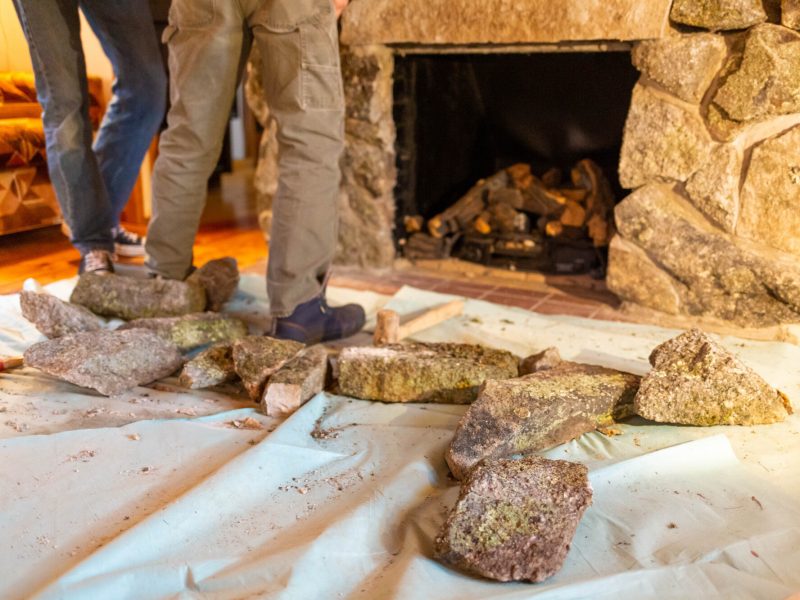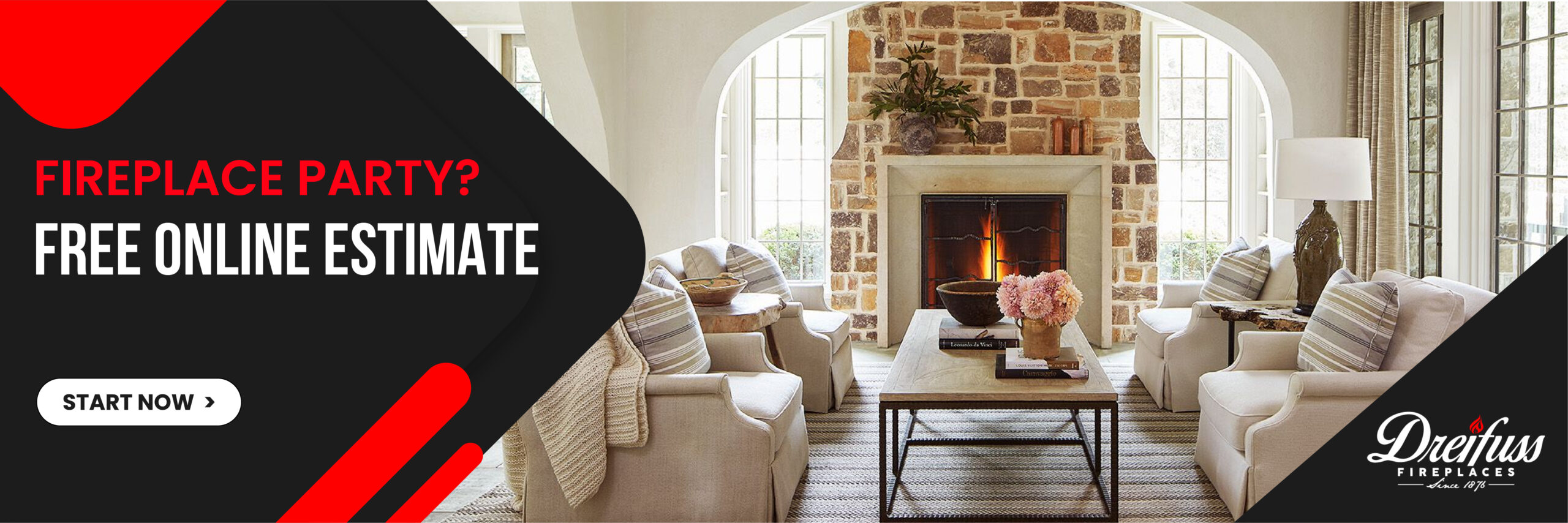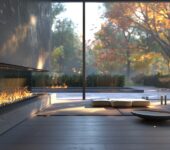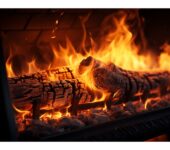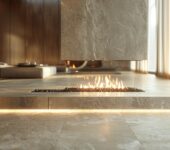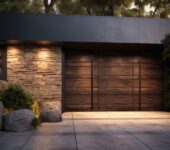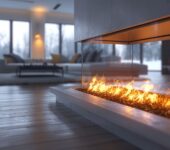Table of Contents
A new fireplace can add thousands of dollars of value to your property. Even an outdoor fireplace can add as much as $1,000. Although electric ones aren’t as profitable, they’re much easier to install.
You might have a lot of fireplace ideas that will serve to improve your home’s overall design and enhance its aesthetic. However, not every house is compatible with fireplace installation.
So how do you find out if you can install a fireplace in your house, and why would you want to do so?
Building Codes
First of all, you’ll need to look up the building codes for your specific home and city.
The floor and walls of your hearth must be over a certain thickness, and the hearth must be reinforced to carry its own weight. There must be a chimney with flue lining depending on the type you install. You’ll also find regulations on the type of material the fireplace should be constructed out of.
Needless to say, it’s a lot of confusing jargon that most homeowners won’t understand. However, it is essential that whatever professional installer you hire understands the building codes and what is allowed on your property.
In addition, your insurance company may require a safety check by a home inspector of their own choosing after the new fireplace is installed.
Placement
Once you’re aware of whether or not you can install a fireplace in your home, you’ll need to find the right location. Modern gas fireplaces can be installed anywhere in your home. The same goes for newer wood-burning ones.
However, installing a fireplace on your outside wall will be much easier. You can treat it as an addition to your house. It won’t require navigating around the constraints of an interior wall.
Ideally, you’ll place your fireplace in a central area such as your living room. You want the space to be large enough so that the heat can distribute evenly throughout your home.
Budget and Resale
How much it costs to install a new fireplace will depend on a variety of different factors. It may cost you as little as a few hundred dollars or as much as ten thousand.
For example, an electric fireplace only requires an insert space. It doesn’t need ventilation or a chimney. As such, you won’t need to do much remodeling or construction to install one.
However, something like a wood-burning fireplace does require a chimney. They can produce a lot of smoke and noxious fumes that need to be vented outside of your home. This may require tearing up your wall, ceiling, and roof.
The upside is that what you invest in your fireplace also goes into your property value.
Installing Different Types of Fireplaces
If you’re wondering if you can install a certain fireplace into your home, you’ll first need to consider your options. The three main types are wood-burning, gas, and electric fireplaces. However, there are also freestanding fireplaces available that don’t require a lengthy installation.
Wood-Burning
A wood-burning fireplace requires space above it for a chimney. What that means is installing one of these in a two-story building can get complicated. There’s always the possibility that the spot you’ve decided is perfect would bisect the room above it with the chimney.
As such, it’s often recommended that wood fireplaces are installed on the outer walls of your home. That way, you know the chimney won’t go through a second-floor room or cause issues with the building’s structural integrity.
Gas Fueled
While gas fireplaces also require some kind of ventilation, it’s a different kind. They don’t need a huge chimney to vent out excess smoke and fumes. Instead, they use a flue system.
These flue systems often vent outdoors horizontally, which means they can work on whatever floor you want them. You can also find gas fireplaces that don’t require a venting system at all.
They’ll function well as long as you can attach them to your natural gas line. However, the price of gas may be a factor in whether or not you want to install one.
Electric Fireplace
An electric fireplace is one of the easiest kinds to install and works with pretty much any house layout. You can install them into a fireplace insert or even incorporate them into a piece of furniture.
All they need to function is a power supply. You won’t have to worry about a chimney or ventilation of any kind. Like a space heater, it takes in air from the surroundings, heats it, and releases it back into the room.
There are two main concerns to keep in mind.
First of all, you need a secure enough outlet that can handle however much power the fireplace requires. You don’t want it shorting out your power or tripping your breaker.
Secondly, an electric fireplace will need some kind of clearance like any other kind of space heater. Even though it doesn’t work with an active flame or give off fumes, it can still produce a lot of heat.
Freestanding Fireplaces
If your building is limited in terms of creating fireplace inserts, then there’s always the option of utilizing a freestanding fireplace.
Freestanding fireplaces are available in all kinds of varieties, such as wood, gas, pellet, and electric. These are mostly installed next to a wall, where any fumes can be vented outside using a flue. They’re also much easier to relocate or remove if needed, as they only make a single hole in the wall.
Install a Fireplace Today
Many homeowners these days consider a fireplace to be an essential part of a house, especially in the colder states. However, not many come with them pre-installed. If you want to install a fireplace in your home, you’ll first need a professional to see what they can do.
Dreifuss Fireplaces offers a variety of options for your home, from linear fireplaces to custom fits. Contact us to learn more about your options and to get a free estimate on your job.
Latest Articles
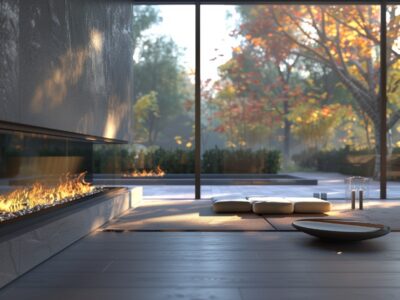
Can I Have A Fireplace In My Sunroom?
Table of Contents1 Pros and Cons of Having a Fireplace in a Sunroom2 Types of Fireplaces for Sunrooms3 Factors to Consider Before Installing a Fireplace

Why Is My Garage Door Opener Opening Both Doors?
Table of Contents1 Understanding Garage Door Openers2 Common Issues with Garage Door Openers3 Why Is My Garage Door Opener Opening Both Doors?4 How to Troubleshoot

Is It Normal For Sparks To Come Out Of Chimney?
Table of Contents1 What Are Sparks in a Chimney?2 What Are the Dangers of Sparks in a Chimney?3 How to Prevent Sparks from Coming Out



